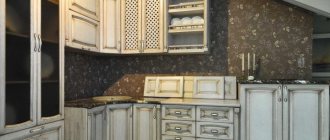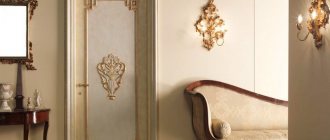Good to know
How to use the texture of plaster in wall painting - How to paint grape leaves - How a novice artist can find an order for wall painting - Using base "C" paint in wall painting - Read customer reviews - How to make a relief with fine detail - How artists can deceive - How and how to paint plastic
Application of coloring compounds
Before painting metal bronze, it should be prepared.
Careful surface preparation is required to remove traces of dirt and rust. If you apply paints and varnishes to areas damaged by corrosion, this will not protect the metal from premature destruction.
Preparatory work
Rust and remnants of old paint must be removed from the metal surface. To carry out such work, the following methods are used:
- Rough mechanical cleaning with a wire brush or abrasive disc mechanisms.
- Sandblasting. The advantage of this method is penetration into hard-to-reach areas. The downside is the relatively high price of the unit.
- Cleaning surfaces with chemical compounds that react with rust and old paint. At the end of it, everything can be easily washed with a soft cloth.
After cleaning operations, a primer is applied to the prepared surfaces (in two layers). This improves the adhesion of the metal surface. At the same time, an additional moisture-proof polymer coating is used. Once the top coat of primer has set, you can begin applying the bronze dye.
Painting
Depending on the type of dye, it is applied using one of the methods to form a monochromatic coating. To do this you need:
- dilute the mixture in water in the proportion described in the instructions;
- prepare working brushes for painting small parts and surfaces in hard-to-reach places;
- When painting flat areas, use a regular roller.
When painting you need to pay attention to the nuances:
- To obtain a more saturated color, after the first layer has dried, you will need to apply another one.
- For streaks and stains, it is necessary to evenly blend the composition over the surface.
The bronze composition can be used to paint stainless steel to give a noble appearance. Bronze acrylic dyes are suitable for these purposes. They are environmentally friendly and durable.
Read further:
Aerosol paint in cans
How to paint fiberboard
Acrylic paint for metal: an obvious advantage
What are alkyd varnishes, what are they, when and how are they used?
How to paint the inside of a timber house
Question answer
Hello Anna. Can you tell me how long after completing an oil painting the canvas can be removed from the stretcher to be stored in a roll? There was a need to transport a large canvas, the work on which was completed three weeks ago. The paint layer is thin and not covered with varnish. What would be the correct thing to do: after transportation, immediately pull it back onto the stretcher for further drying, or can it be further stored rolled up? I am very worried that the paint layer will not crack during subsequent unrolling. With uv. Alexander. Read the answer
Hello, Sergey!
I’ve been reading your site like an encyclopedia for a couple of months now! By God, this is just a WIKIPEDIA for wall painting beginners! Thanks a lot! I have even more questions due to the fact that I have recently been living in Germany, and I have to study all the materials on the spot myself. Those. with acrylic paints, everything is clear, but I still can’t figure out which primer - and most importantly, on which walls to use. I realized that it was acrylic. But for the life of me, I can’t find it in regular hardware stores. There is a construction type, like deep penetration, they use it before puttingty. Is it possible to use this or not... I don’t understand. It seems to be water-based, but for example, in the kindergarten, where I plan to offer to paint the walls, they have already been painted and in one place it was picked out, this is what is available (3 photos). Please tell me how in this case you would write on these shiny walls and what you would use to prime them with? Because Most likely, the main color of the walls will remain, and on top I will paint details, ornaments, children's motifs, etc. Not a continuous canvas. Read the answer
Good evening!...I’m going to paint a concrete well to decorate the interior, I’m new to this kind of thing, and I absolutely don’t know what paint to choose so that it’s not too expensive and it’s easier to paint, please give me some advice. Thanks in advance!!!
Read the answer
Gilding stucco
Our company offers you services for decorating your space using German gold leaf. Gold leaf is used to decorate a variety of surfaces, such as polyurethane and plaster stucco, forged products, baguettes and many others.
Gilding with gold leaf is a luxurious decorative element and the best way to give your interior individuality and jewelry beauty, making the space around you rich, but at the same time, light and elegant, emphasizing your refined taste.
Gilding with gold leaf dates back to ancient times, back to 2500 BC. Even then, craftsmen from India, Greece, Egypt and China widely used gold leaf to decorate things and homes. In references to Pliny and Homer it is said that one ounce of gold yields 750 leaves, each side of which is four fingers wide. How gold leaf is prepared and the method of applying it are described in detail in the works of Theophilus, dating back to the beginning of the 12th century.
LiveInternetLiveInternet
Quote from Nina_Nikishina's message
Read in full In your quotation book or community!
Decorative gilding
Gilding with paint There are ready-made gold paints, which, when applied to a cleaned surface, give the product a golden appearance. The paint consists of a metal powder that reproduces the color of the metal (gold, bronze, copper, iron, etc.). However, paint can only approximately imitate real leaf coating. 1. Acrylic paint is applied to the prepared wooden candlestick as a primer. Red goes better with gold and cool blue with silver. Let the soil dry. 2. Before application, the gold paint is thoroughly mixed with a wooden stick, as the pigments settle to the bottom of the container. A small amount of gold paint is poured into an old saucer and the candlestick is evenly tinted from bottom to top. The paint dries very quickly. 3. To give the candlestick an antique look, after the paint has dried, the “golden” layer is lightly sanded with coarse wool until the red primer layer begins to show through in some places. Taken from: https://remstd.ru/
Framed in gold - gilded leaf
Since ancient times, gilding has been carried out mainly in two ways: by gluing gold leaf onto an object or by fire gilding, based on the use of mercury. The second method of gilding is very dangerous. For example, when the domes of St. Isaac's Cathedral in St. Petersburg were being gilded (1838-1841), about 60 people were poisoned by mercury vapor. Nowadays this method of gilding is not used.
But gilding with gold leaf is widely used today. The word “susal” comes from the ancient word “susal” - face, that is, leaf - facing. Such gold is stored in special books in which 60 pieces of gold with a thickness of 0.13 to 0.67 microns are placed between sheets of paper. Sheet size - 80 x 80, 72 x 20 mm. Other sizes may be available.
Gold leaf can be free and transfer. Free gold is simply a very thin layer of metal. It cannot be touched with your hands; it deflates from breathing, so the gilder manipulates it (transfers, cuts, smoothes) using a special knife and a squirrel brush. In general, considerable skill is required. In transfer gold, each sheet of gold is placed on white silk paper, together with which it is transferred to the surface to be coated. Once the gold is stuck in place, the silk paper can be removed. Transfer gold is much easier to work with.
Gilding
There are two types of gilding with gold leaf: oil (matte) and glue (glossy).
Oil gilding can be used on almost any surface - wood, metal, plaster, plastic. This is a fairly simple, convenient and common method of gilding. This method is called oil-based because the gold leaf is glued onto oil varnish - mordan. The composition of the varnish can be different, it all depends on the conditions in which the gold-plated object will be located.
Adhesive gilding is used only for interior work. This method is used to gild mainly wood, sometimes plastics (polyurethane). The technique of water gilding has remained virtually unchanged since ancient times.
Gold leaf and various types of gold paint can be purchased at art supply stores. We offer transfer gold in different sizes and shades: white gold, yellow gold, 24-karat pure gold. It must be remembered: the purer the gold (the more carats it contains), the less sensitive the gilding will be to the influence of weather and climatic conditions. A material that anyone can purchase to try their hand at gold plating is transfer gold foil.
All that glitters is not gold
A gold-plated product is an expensive thing, not accessible to everyone. The price is mainly high due to the high cost of gold. Therefore, a cheaper replacement was found for gold leaf. One of the well-known substitutes for gold leaf is potal. Potal does not contain precious metals and is the thinnest sheets of a metal alloy - copper with zinc or copper with aluminum. Potal is much cheaper than gold leaf. And it is great for expressing individuality and even momentary mood. The technique of decorating with gold leaf is similar to decorating with gold leaf.
Film gilding
With some stretch, gold self-adhesive film for laser printers, from which stickers and labels on CDs are made, can also be classified as gold leaf. This material is quite accessible to home craftsmen, and working with it is easy. The film is unwound from the roll and gradually glued to the surface. Film gilding is used only on flat surfaces. This is how simple wooden baguettes are gilded, for example. All imitation gold, as well as gold leaf with impurities, are usually coated with a protective layer of varnish.
1. To turn a wooden box into gold, use gold leaf. First you need to apply glue to the base. In this case, acrylic is suitable (it dries quickly).
2. The leaf of gold leaf is glued in its entirety. Since it is thicker than gold leaf, it can be separated by hand and placed on dried glue. The sheets should lie without wrinkles, one on top of the other with a slight overlap.
3. Using a kolinsky brush, the gold leaf is smoothed out and glued to the base with light tapping. Be especially careful when pressing the edges and corners. The excess is picked up on a piece of paper for further use.
4. Since the gold leaf is made of metals such as copper, zinc and aluminum, it oxidizes and darkens when exposed to moisture. Therefore, it is necessary to apply a protective layer of transparent varnish on top. Use shellac or tsaponlac. Bituminous varnish gives gilded items an antique look. After drying, the varnish is polished everywhere, except in hard-to-reach places where a noble patina remains.
Gold and silver sparkles
Metal in the interior is especially relevant today. Even small accessories like boxes, cornices, candlesticks, if given a shiny look, completely change the impression of the apartment. The easiest way to transform them is with metallic glitter or metallic paint in an aerosol can. Working with these materials is interesting, easy and pleasant.
As if by magic, you can literally prepare for Christmas in half an hour. Household items like nuts, pebbles, and shaped pumpkins actually have a wider range of uses than is commonly believed. Especially if the surface, sparkling with gold and silver, is illuminated with candles.
Apply a layer of glue to the box with a brush and, while it is still wet, sprinkle with small glitter. Spread the glitter with your hands, making sure that the surface is covered evenly. A wonderful decoration for a dressing table.
Series of messages “Techniques - Imitations”:
Part 1 - MK on the effect of aging with bitumen varnish Part 2 - Decorative effect of antiquity Part 3 - Decorative gilding Part 4 - Bituminous varnish for aging. Part 5 - Basic techniques for tinting putty... Part 25 - Carrara marble - let's draw it ourselves! Part 26 - imitation of partition enamel Part 27 - Master class "Antique watches using the decoupage technique with an imitation of the effect of oxidized metal"


